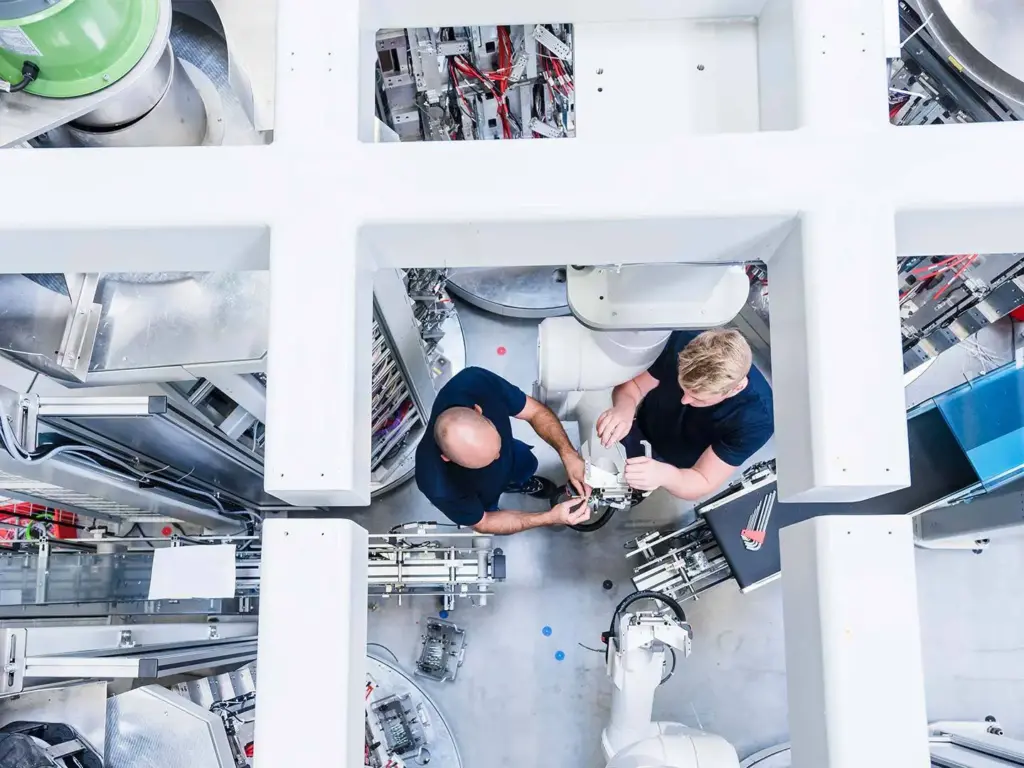In traditional manufacturing models, product development cycles can take years. At the end of the process, devices are purchased by consumers. And (unless something goes wrong that’s under warranty) that’s essentially the end of the relationship between manufacturer and consumer.
In order to create a connected product and strengthen relationships with consumers, manufacturers must operate differently. Connected products require shorter development lifecycles, a platform to support data ingestion for multiple products, managed services for infrastructure and security, application development and updates, and other tools and processes that many manufacturers are encountering for the first time as they move into the connected product space.
All of that is built atop a platform, and creating successful connected products means that manufacturers need to make a fundamental shift from products to platforms.
This shift involves three key themes:
- What experience are you creating for users?
- Does the platform you’re building allow you to ingest data and analyze it at scale?
- How do you integrate content, data, and the experience of the thing into existing behaviors and activities, or in the corporate environment, what workflow or value are you creating for the intermediary that uses the device or data from the device?
This content was developed from a presentation created by Vervint CIO Jim VanderMey. At MedFuse, VanderMey unpacked the differences between a product and a platform and how to build a system that generates the most value for healthcare providers and patients.
First, Create an Outstanding Experience
Historically, once a product left a manufacturer’s warehouse, the experience created by that product was primarily a two-way relationship extending from the user to the device and back.
Now, companies are creating smart products that connect consumers, devices, and businesses via apps to drive more meaningful experiences and build stronger relationships between consumers and manufacturers. Customers may use the app to pay a bill, check in to a flight, change the settings on a device, or complete other tasks.
As more and more apps enter the marketplace, consumers have more options than ever to choose from. They are looking for an outstanding experience with a device and want value from the app in return.
If the app is difficult to use or provides a less-than-stellar experience, consumers have no problem looking elsewhere. Today, 76 percent of customers will switch brands for an experience that meets their expectations.
But it’s not just consumers who want to benefit from their device’s data. Companies also want to collect the data generated by engaged users of the device and app because it will tell them more about their customers, how their products are used, and much more.
Determine How You Will Collect and Analyze Data
Most companies delving into the connected product space encounter a major challenge as they try to effectively collect and leverage data from applications and devices. Part of the reason is that making the shift from products to platforms requires an understanding of a much greater system. The diagram at the top of this page helps illustrate the larger ecosystem in which connected products exist.
Individuals’ connected product experiences generate data that is sent to the cloud. Here, it is combined with data from other users. Data analysts (in a broad sense) study consumer and device data as well as enterprise data and perhaps even third-party data to find ways to create new value for users and the company.
In this way, connecting your product creates value for end users as well as your company. The key to creating insights is considering the bigger picture and building a platform that facilitates the whole cycle. By creating a great experience and collecting data via the cloud through a platform, you are able to improve products and services and provide ongoing value to end users.
It is now easier than ever to acquire smart technology. Consumers and businesses can purchase smart devices almost everywhere. But companies commonly fail when they move beyond creating a product or app. Adoption at scale pushes them far outside their traditional capabilities because narrowly focused platforms don’t allow them to ingest data and analyze it at scale.

Getting Familiar with the Smart Product Development Process
Make Sure You Integrate Your Platform With Existing Workflows
Imagine a customer is wearing a fitness tracker. Each jog, hike, or run creates new information about habits and behavior. Data accumulates and continues to grow.
The corresponding platform then ingests and processes that data. But how will your business utilize that information? Can your platform seamlessly integrate with new and existing workflows at your organization?
Moving to connected products requires new capabilities, but it also requires integration with existing processes at your organization. Building a digital product also means creating organizational competency to utilize the platform that has been built. Handling this internally will require changes and adjustments inside your organization.
But having all that data isn’t enough. You also have to get data to the right people in a format they can ingest if your business wants to effectively leverage it for growth. Often, this means layering insights and data in accessible, transparent ways for users. This gives everyone the information they need to make informed decisions about product development, features, updates, and more.
Of course, the data collected and analyzed should primarily provide value to consumers. Delivering data and insights to consumers improves their experience, which drives additional engagement with your product, platform, and business.
Vervint: Thinking Ahead. Seeing Beyond. Building Together.
Vervint has a depth and breadth of capabilities that we continuously apply to help companies build successful IoT devices and platforms. Whether your team is just setting out into the connected product space or you’re struggling to drive meaningful value with your connected product ecosystem, our experts are ready to help accelerate your strategy. Contact us to get started today!


